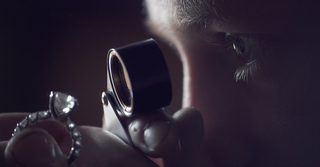Half through an undergraduate degree at the Birmingham School of Jewellery, a unborn cumulative manufacturing lead at Cooksongold and an associate of Innovate UK’s Knowledge Transfer Partnership( KTP) programme, comes to a realisation.
“ I was a terrible jeweller and I demanded to do it all in CAD and publish it, ” Maria Paparozzi- Shipman modestly tells TCT.
From that point until the end of her degree, Paparozzi- Shipman progressed to make her collections without touching a single piece of jewellery Designed in CAD, the pieces would also be published, polished through a third party, and monuments set by someone differently.
“ I ’m a bit of a conversationalist and also the wisdom comes latterly, ” Paparozzi- Shipman says of her partiality for jewellery aesthetics, and less so the specialized aspects of jewellery manufacture. “ It’s like, ‘ let’s produce the Mona Lisa. ’ – ‘ Okay, well how are we going to do it? ’ It’s further about the design aesthetic for me and also the engineering comes in latterly, and we ’ll break the problems in how to get there. ”
This has been her vocation ever since – first at Cooksongold, and now Diamond Centre Wales( DCW), as she implements 3D printing technology within the bespoke jewellery manufacturer through an original 24- month contract.
“ We want to produce a really immersive way of designing jewellery that’s fully bespoke, ” she tells TCT of her points at DCW. “ It can be made relatively simply, we know how sustainable the manufacturing is, we can do it all in house, and we've a massive platoon of traditional jewellers behind us that also make sure it has the integrity of a traditional piece of jewellery. ”
She's now three- diggings of the way through that contract, with the development of printer parameters for the product of white gold corridor on an nascence Ray AL3D- Essence 200 picky ray melting( SLM) machine well underway. nascence Ray is dubbed by Paparozzi- Shipman as the ‘ bones
to look out for ’ in the jewellery space, owed primarily to the use of a cartridge system to load accoutrements into the system that reduces greasepaint running. A 600 x 600 mm footmark, 50µm ray spot and 200W fibre ray only help to grease the printing of fine details in an office- sized space. DCW also considered Binder Jet technologies, but were put off by the uncertain loss rates during sintering.
As the company moves forward with SLM, which will condense being casting styles, training has been given to five workers as part of Paparozzi- Shipman’s knowledge transfer endeavours. sluggishly, as they inch near to the end of the cooperation, product of veritably bespoke corridor is anticipated to commence, with a target of two- thirds of the 25- 40 rings that are produced per week at DCW to be transitioned to cumulative manufacturing.
“ It’s about sluggishly bedding( 3D printing) and making the business strategy really strong, ” PaparozziShipman explains. “ I ’d say a large proportion of this part is checking that there's an appetite for it in the request and what we need to do to make sure that the return on investment, and it’s a big investment still for any company, is seductive to the managing directors. ”
To insure the investment in 3D printing technology is value for plutocrat, DCW won't only look to influence the technology’s personalisation capabilities, but also attack ‘ articulated and moving pieces ’ similar as hinges and springs, which ‘ have further of a story to them. ’ Progress will be made then before the contract is over in the summer, while white gold parameters on the nascence Ray machine are anticipated to be finalised and a service office, which is intended to act as the manufacturing system for jewellers like DCW, will be soft launched to a select many guests too.
Lesser detail of the work Paparozzi- Shipman has carried out with DCW will be available come the contract’s end, with the business case for the continued use of 3D printing at the company demanding to be proved out. The sense is, however, that 3D printing has set up a new home in the Welsh denes that DCW resides.
“ The jewellers prefer a published part over a cast part, just purely because of the time it takes to fill in a severance, ” Paparozzi- Shipman says. “ It's going to take some time( on the CAD side). The CAD platoon are really on board with it, but for the design rules that are fully different to the casting design rules, it takes some time to get those effects in place to be the stylish designs for the process. ”
